How to choose the best trekking poles
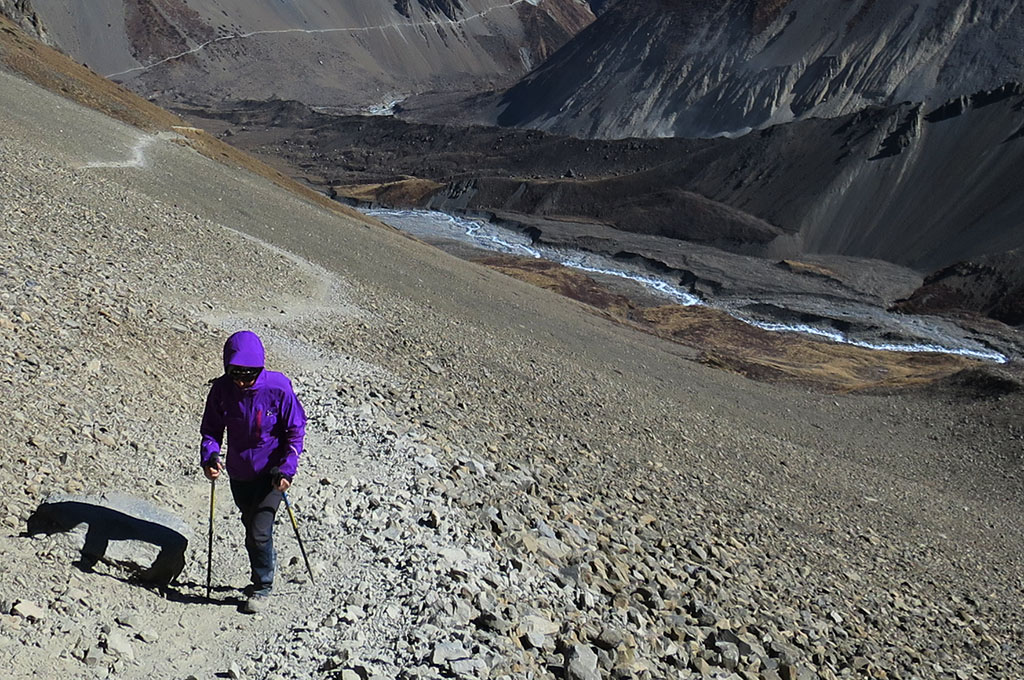
Trekking poles are an indispensable piece of mountain equipment. for hiking, mountain climbing, or simply walking on uneven terrain.
Advantages of using trekking poles
Two sticks are better than one. Although trekking poles can be purchased separately, when walking in mountain terrain it is preferable to use two poles, as they provide greater stability and better support in difficult terrain.
Among its advantagesThe use of walking sticks contributes to:
- Saving energy, especially on climbs, by relieving some of the strain on the arms.
- Protecting joints (knees and ankles), especially on descents.
- Keeping the balance in difficult terrain (river crossings, steep descents) and to avoid possible falls.
- Move obstacles out of the way such as branches, spider webs, etc.
Different activity, different type of cane.
Before we look at the different characteristics of a trekking pole, we should know that the poles will be different depending on the type of activity for which they are intended and that, apart from trekking poles, we can also find ski poles (alpine, cross-country, touring, freeride), Nordic walking, cross trail or trail running poles. Therefore, when you are going to buy trekking poles, make sure that it is a model intended for this use.
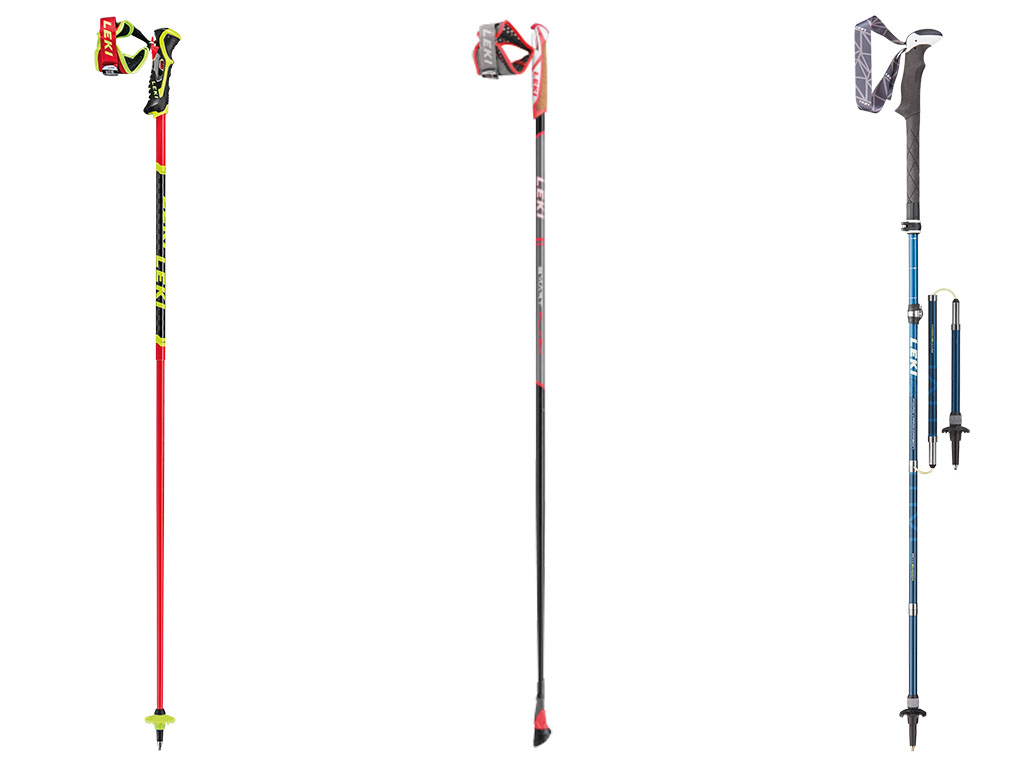
Three types of Leki poles for different uses: skiing, Nordic walking and trekking.
Characteristics of walking sticks
Although a trekking pole seems to be a rather simple device, there are a series of characteristics, and not few, that will make the difference in quality and price between one model and another. Among the various characteristics that we can distinguish in the trekking models we find the following: length adjustment systems, way of foldingwith/without cushioning, weight, locking mechanism, material, handle, rosette o dragonera.
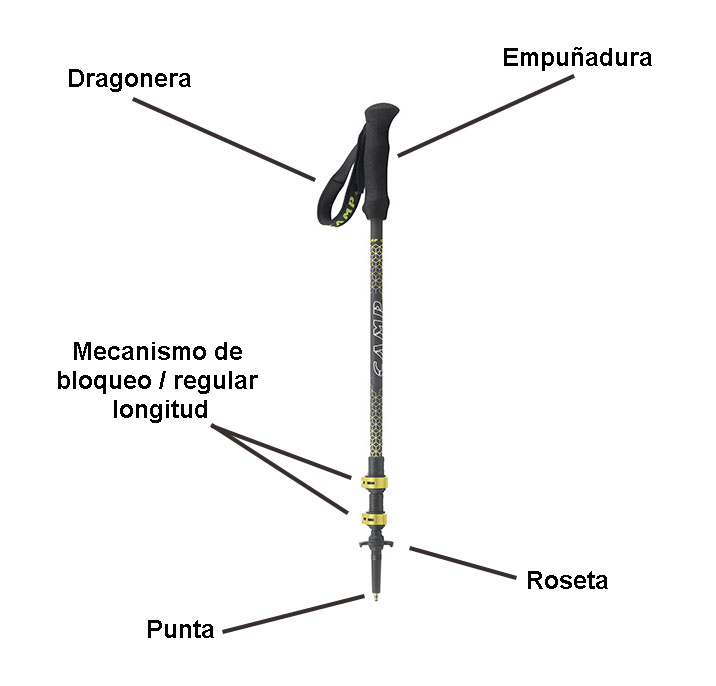
Length
The length is the main element to consider when choosing trekking poles. Most models are adjustable (highly recommended for use in the mountains). A good fit is essential for comfort and to avoid putting strain on your arms, neck, back and shoulders.
The correct length is determined when, on a flat surface, the elbows form a 90-degree angle when holding the poles. The length will change depending on the height of the individual, but as a guideline:
- A 1.6m person you will need a cane of: 110cms.
- A 1.7m person you will need a cane of: 115-120cms.
- A 1.8m person you will need a cane of: 125cms.
For advice, uphill it is recommended to shorten the pole by 5-10 centimetres; and downhill, lengthen it by 5-10 centimetres.
Locking mechanisms for length adjustment
There are mainly three mechanisms for adjusting the length of the poles: screw, clip or quick release, or by means of a button.
- The screw type were the first to appear. Until a few years ago, most of them were of this type. This type of cane has the advantage that the mechanism is more concealed as it is internal. On the downside, the threads often become loose over time and this is often the main reason for replacing them.
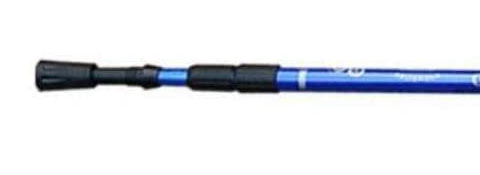
- The clip-on or quick-release type They appeared later and are similar to the fasteners used on bicycle wheels or seat posts. They are a very reliable mechanism and are very quick to fold and unfold. They are increasingly used and are replacing the screw fasteners.

Camp Backcountry 2.0 Pole
- In the button-typeThe sections are unlocked at the push of a button. This mechanism was the last to appear.
Folding of batons
It must be possible to pick up trekking poles.This is often not the case with ski poles and other poles. In addition, a quick and easy folding is a quality to take into account when we face a difficult stretch where we have to climb and we need to store them to keep our hands free. The poles that fold in sections, as well as being lighter, are very practical for travelling, when we want to store them in a rucksack. Some models can measure between 35-40cms in length.
There are two types of folding mechanisms: telescopic and folding (there is a third type of hybrid baton that combines the two mechanisms and then the fixed ones that do not fold).
- Telescopic: In this type of poles, generally with 3 sections or segments, each tube is inserted into a top tube. This type of poles are very resistant and have a wide range of height adjustment. A model of this type can oscillate between 60cms folded and around 1.35m at the limit. They are usually the cheapest.
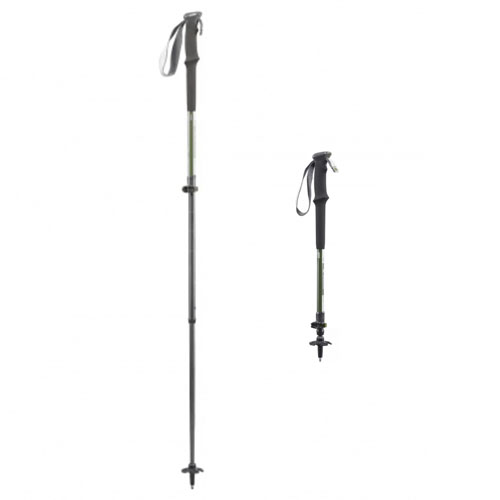
- Foldable in sections: In this other type of pole, the segments are uncoupled in a similar way to tent poles. Each section is separated from the next and remains connected by a string or rope, coated with a plastic material for greater strength. To ensure that the assembly is perfect and that they do not unravel, they usually incorporate a system for tensioning the cable. These models are lighter than the telescopic ones and can be less than 40 cm long. They have the great disadvantage of not being able to vary in height.
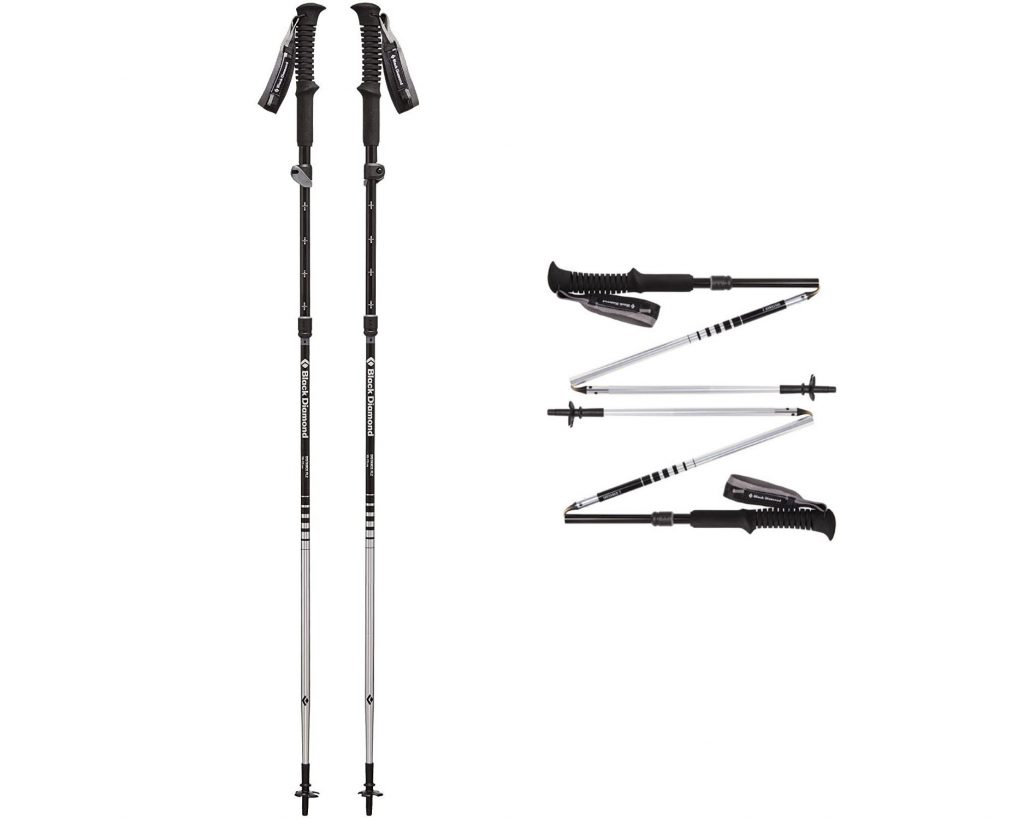
- Hybrids (folding in sections with a telescopic section): for trekking and mountaineering they are the most recommended, as they allow the height of the pole to be adjusted. This is very useful for lengthening or shortening them on ascents and descents. They are lighter than the telescopic ones but not as light as the folding ones.
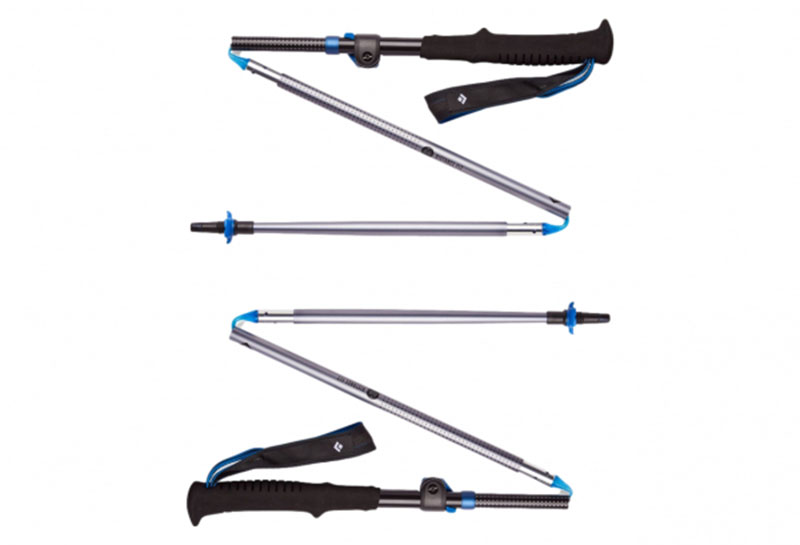
Cushioning
Cushioning is one of the improvements offered by trekking poles. It is an internal mechanism that cushions the impact against the ground and is particularly useful downhill. Uphill it is usually deactivated. As they incorporate an additional mechanism, they have the disadvantage of being a little heavier.
Weight
Choosing lightweight poles is extremely important, as apart from being easier to handle and less tiring for the arms, they will be lighter to carry on your back when not in use. Weight will depend on material and accessories. that they incorporate. For example, those with cushioning will weigh a little more than those without, and folding ones a little more than fixed-length ones.
Manufacturing material
Most batons are manufactured in aluminium (in different alloys) or carbon fibre (in different compositions).
- The aluminium poles are slightly heavier than carbon and although they are very resistant to breaking, they bend quite easily. They are cheaper than carbon but like everything else, it depends a lot on the type of alloy.
- The carbon fibre poles are lighter but also significantly more expensive. They are less resistant to breakage than aluminium ones but do not bend and transmit less vibrations.
Handle
All trekking poles are nowadays manufactured with an ergonomic handle that ensures a good grip and a lot of comfort. The materials they are usually made of are:
- CorkThey resist perspiration well and have a pleasant feel.
- Foam: absorb moisture and transmit softness.
- Rubber: They insulate well from the cold, but with heat, they can cause blisters.
- Plastic: avoid this type of grip.
In addition, some models have a handle extension which is very useful for when you are climbing steep terrain and the pole is too long.
Dragoneras
The dragonets are the straps into which the hands are inserted for the wrists.. They are used with the dual purpose of keeping the hand relaxed when we need to release the baton, and more importantly, to distribute the effort when we are propelling ourselves and relieve the strain on the hands. They are adjustable and are available in both higher and lower degrees of design. In some models, the straps are different for each hand.
Rosettes
These are the plastic circles that are screwed over the tip and are used to prevent the baton from sinking into the mud, snow or stones. The large diameter ones are mainly used for snow because they are more successful in preventing the stick from sinking and fulfilling its function. The other, smaller and harder ones are used for the rest of the time and are very useful to prevent the tip from getting between the cracks in the rocks all the time or sinking too deep into the mud.
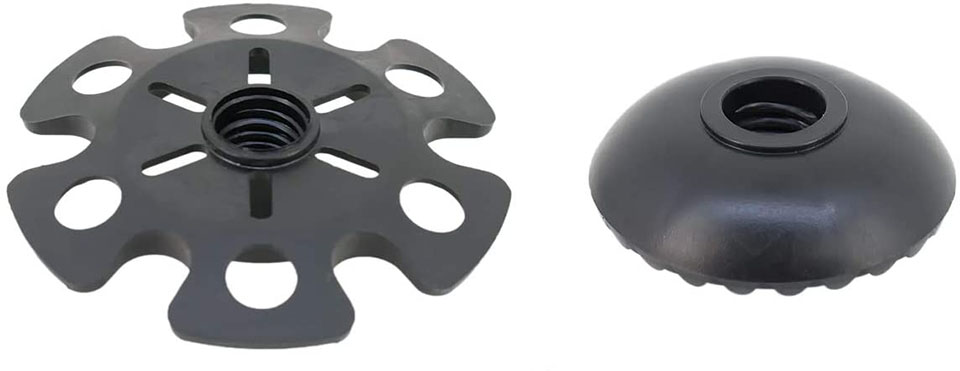
Point
In high-end models, the tip of the pole is usually replaceable. It is the part that suffers the most and is therefore made of very resistant materials such as carbide, tungsten or carbide.
Buy trekking poles (3 models).
The market for trekking poles has become very diversified, so much so that it is possible to find models with exclusive designs and colours for children, men or women, although it is normal to buy unisex poles.
Forclaz MH500

Weight: 240grs
No. of segments: 3
Length: 105cms - 130cms
Price: 17€/unit
Black Diamond Distance Carbon Z

Weight: 285gr/pair
No. of segments: 3
Length: various sizes (not adjustable). In size 120cms it occupies folded 40cms.
Price (11/2023): 159,99/pair
Black Diamond Distance FLZ

Weight: 195/225 g (depending on size)
No. of segments: 3
Length: 95-110; 110-125; 125-140cms. Folded it occupies 34,37,41 cms.
Price (11/2023): 150,00 € 150,00 € couple
You may be interested in:
How to choose your hiking boots >>
Fastpacking is not about going faster. It's about going lighter.
If you come from classic trekking, this is the next step: learning to move with less weight,
more fluid and enjoying every kilometre more.
Join the channel and start discovering what lightness feels like.
